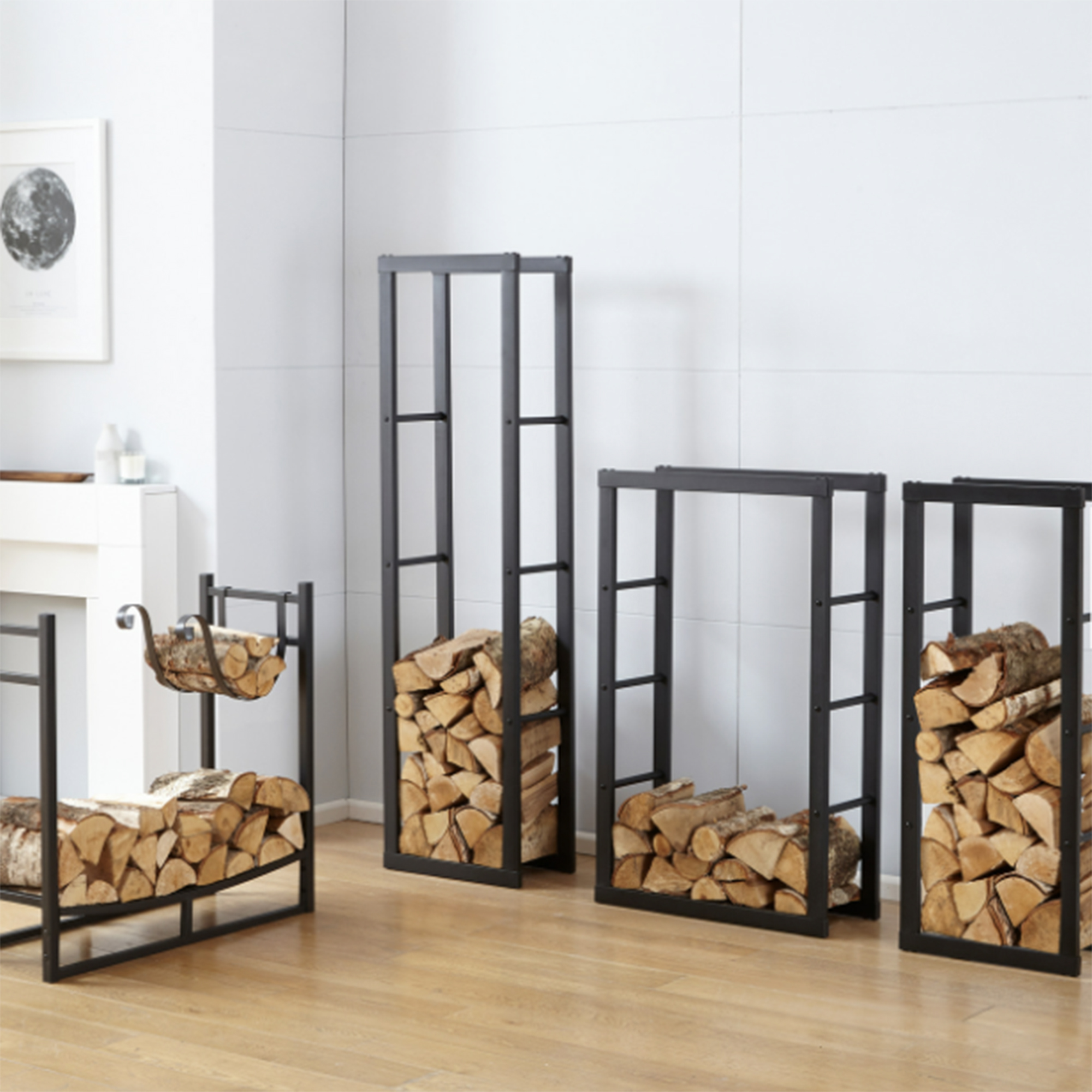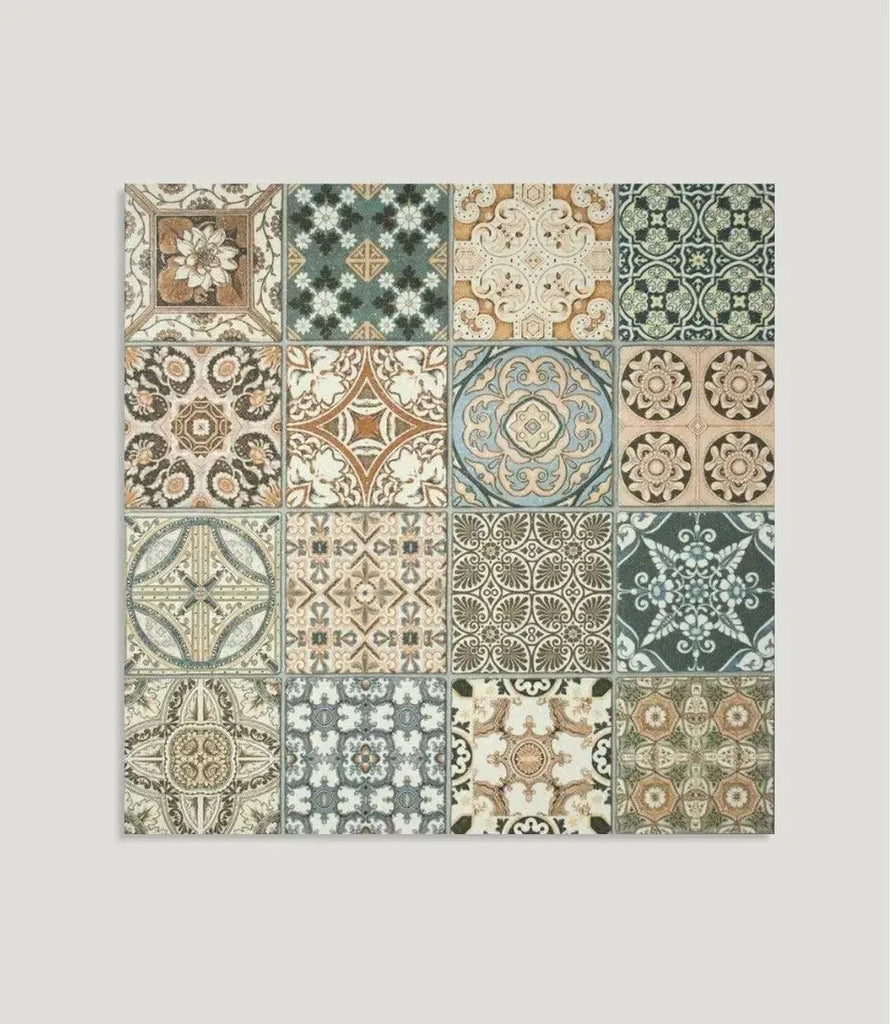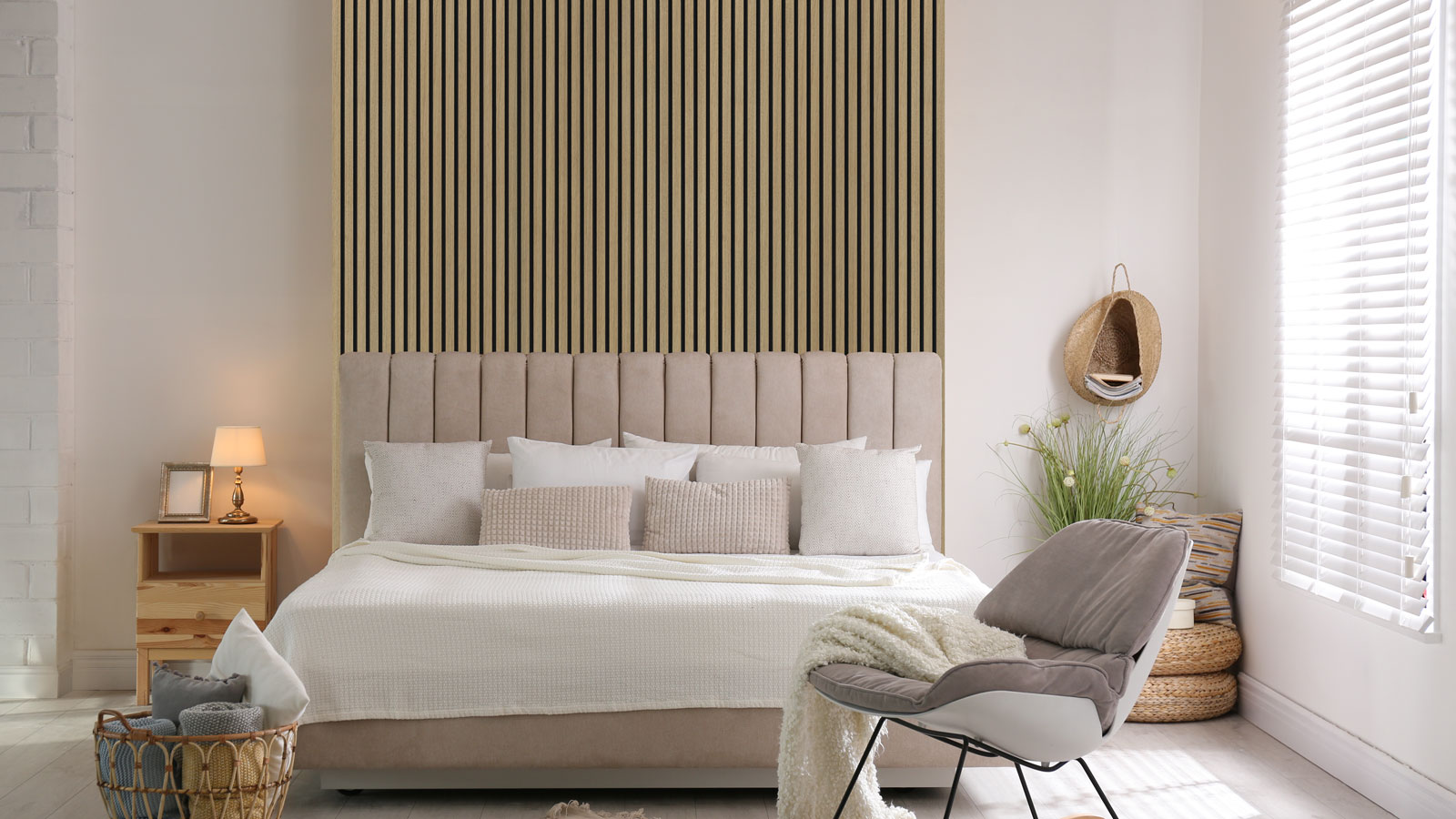These log burner hearth ideas look so good they’ll outshine the flames
Whether you love rustic stone or sleek glass, our guide to log burner hearth ideas has expert tips and creative looks you’ll want to copy at home
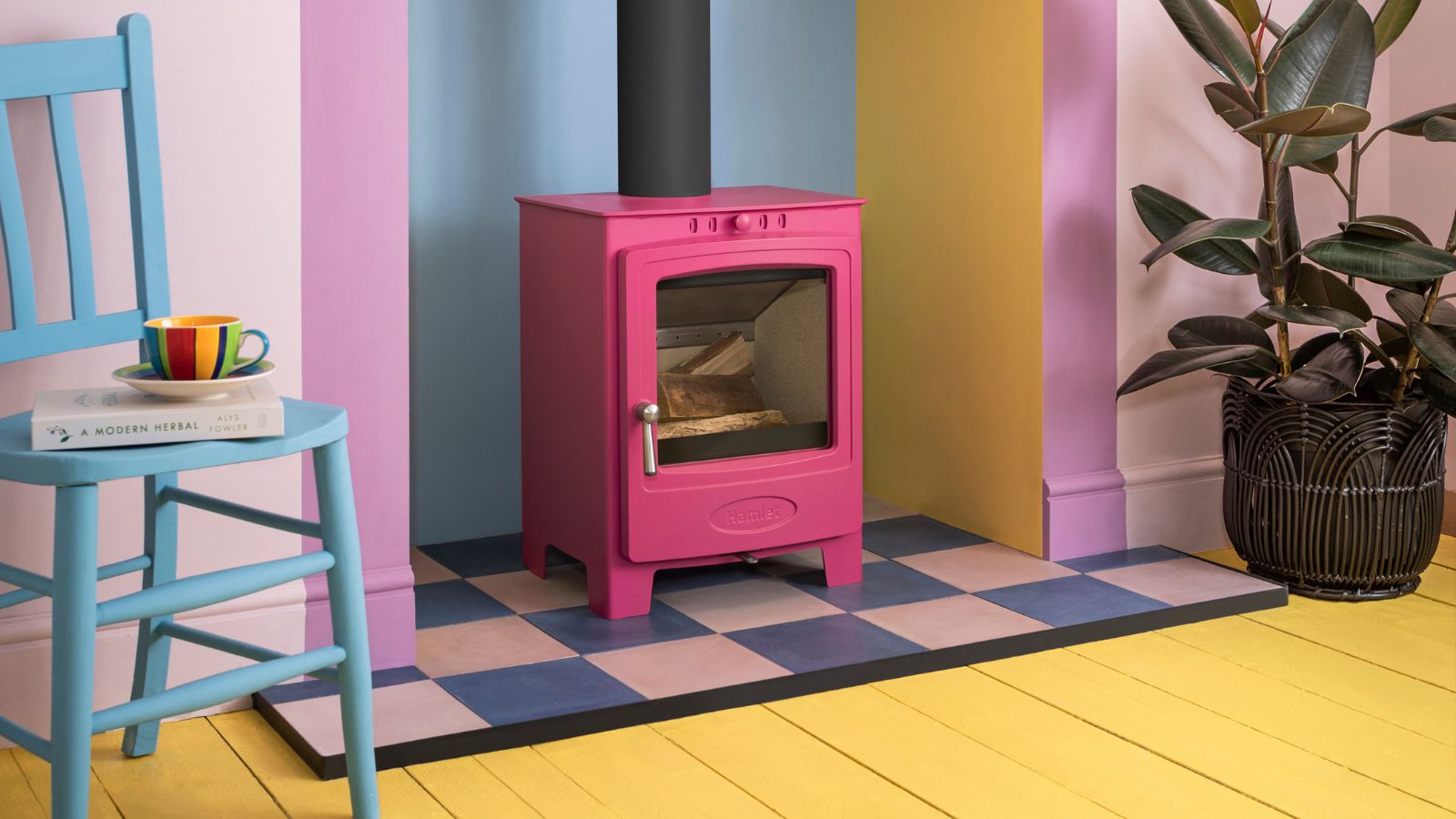
The glow of a log burner is irresistible as the evenings turn colder, but it’s the hearth that truly anchors the space. More than a safety feature, it acts as the canvas that frames your fire – which is why it pays to get your log burner hearth ideas spot on.
The beauty of a hearth is how versatile it can be. Some homeowners love the timeless appeal of slate or granite, others prefer the decorative lift of patterned tiles, while glass and steel bring a sharp, modern edge. Whatever your style, this feature sets the tone for the whole room.
So, whether you’re renovating a cottage snug or reworking a sleek open-plan space, there are endless ways to make your log burner ideas work harder. With advice from stove specialists and designers – plus plenty of inspiring looks to borrow – here’s how to choose a base that feels intentional, stylish, and completely your own.
1. Choose a classic slate design
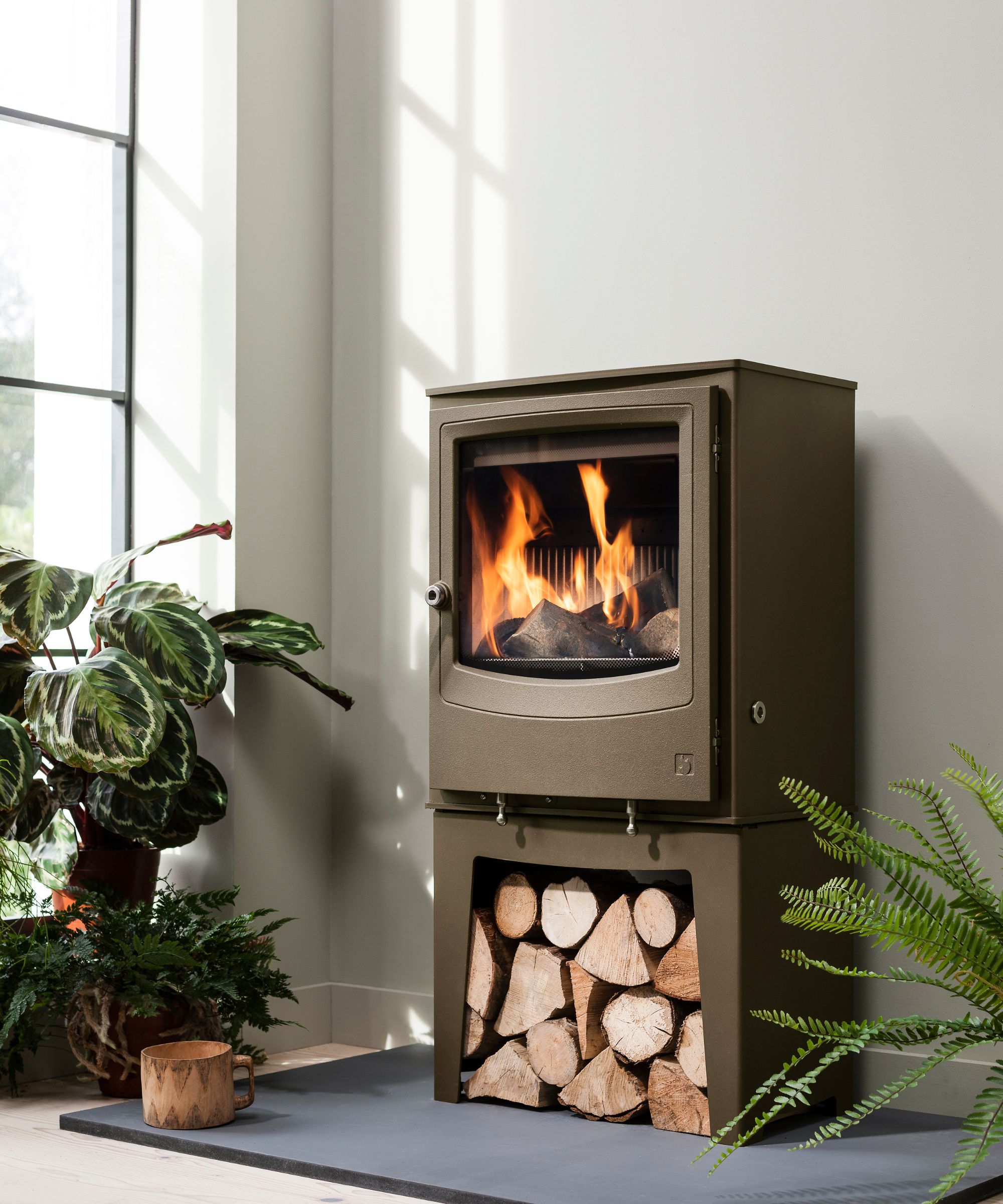
There’s a reason slate remains a go-to for log burner hearths. Its adaptability means it can feel rustic and homely, or sharp and modern, depending on the finish you choose.
As Joanna Humphreys, fire and stove specialist at Direct Stoves, explains: “Slate looks lovely with a solid fuel burning stove. You can choose to have it in a deep matte grey tone or polish it up for a jet-black finish. They're an ideal match for traditionally styled stoves but will match contemporary freestanding stoves as well."
Slate is also a practical choice, as Glen van Zeller, director at Scotts Arms Stoves, explains: “Over the years we've found the best material is slate, as it can be oiled yearly.” According to Glen, this simple upkeep not only refreshes the colour and finish but also helps protect the surface of your hearth, ensuring it stays looking its best even with regular use.
Top tip: Because slate is naturally porous, when cleaning a slate hearth, Glen van Zeller recommends sealing it to combat staining and preserve its appearance over time. TABLEAU Slate Oil from Amazon UK will do the job nicely – it's affordable, suitable for use on hearths, and highly reviewed by customers.
Bring your dream home to life with expert advice, how to guides and design inspiration. Sign up for our newsletter and get two free tickets to a Homebuilding & Renovating Show near you.

Joanna Humphreys is a fire and stove expert at Direct Stoves, an online stove retailer selling an array of wood burning, multi fuel, gas, and electric stoves.
2. Opt for a natural stone finishes for a rustic look
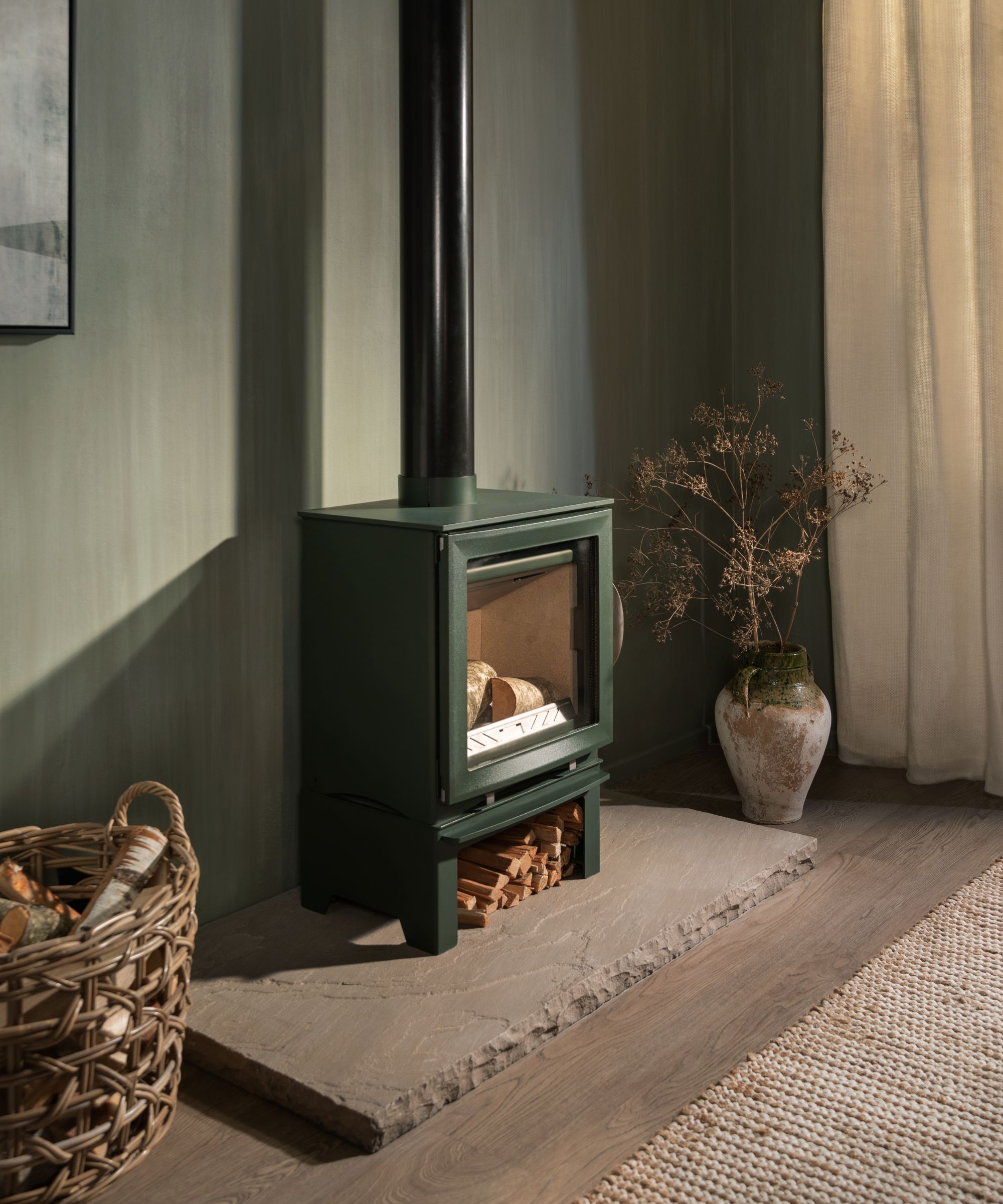
For a hearth that feels grounded and organic, natural stone is a reliable and characterful choice. Rough-hewn or irregular slabs offer a rustic, hand-finished look, while polished cuts of granite or marble can lend a more refined, architectural edge to a room.
Adam Oldfield, director at StovesAreUs, explains why natural stone is such a popular choice: “Choosing a durable, non-combustible material is essential to protect the surrounding floors and comply with stove building regulations. Popular choices include limestone, slate, granite, and marble. These materials offer both heat resistance and visual appeal, suiting everything from rustic to ultra-modern interiors.”
Phil Wood, UK MD of Contura, highlights the appeal of different finishes: “Natural stones such as granite, slate and limestone are all aesthetically pleasing. Clients typically use the latter for rustic, cottage settings, or granite for a sleek, modern touch. Similarly, marble is a highly heat-resistant option, as well as being easy to clean. Despite being a little more on the expensive side, its unique veining and patterns means your hearth is bound to be a one-off.”
For those considering granite, Joanna Humphreys adds a practical tip: “Granite is the best hearth material for solid fuel-burning fires, such as a wood-burner. However, to withstand the heat from your stove, you need to get a granite hearth that has been ‘slabbed’. This means that it has been cut into pieces and mounted in concrete to allow for contraction – to give it space to expand as it heats up.”

Phil is managing director of Contura Stoves (UK) Limited. He has worked in the fireplaces, fires and stoves industry since 1985.
3. Embrace a bold tiled look
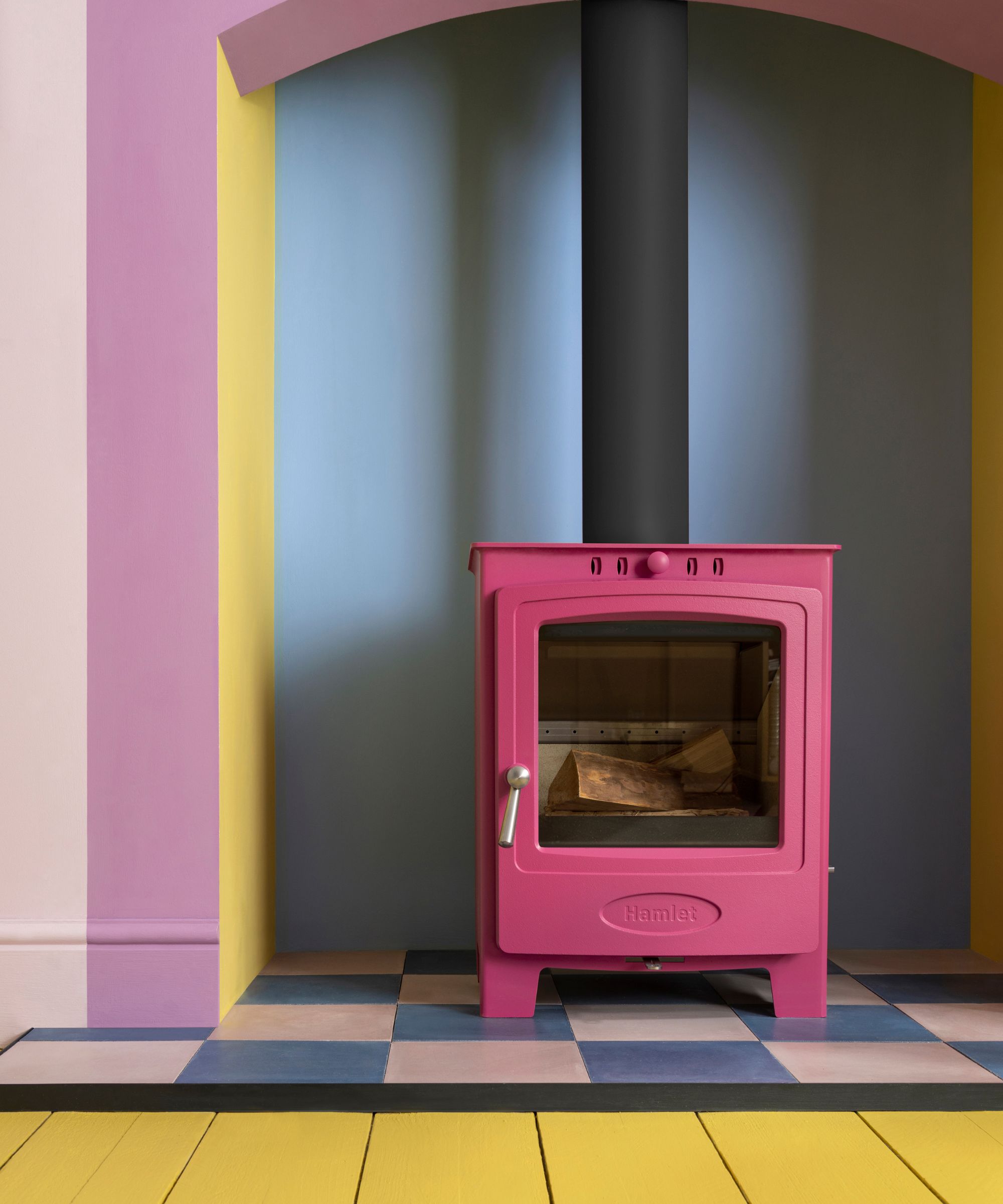
Who says a log burner has to feel traditional? Pairing a brightly painted stove with a tiled hearth in clashing colours creates an instant mood boost. Here, Arada Stoves has turned tradition on its head with a hot pink stove and pastel chequerboard hearth. It's a striking statement look that radiates personality.
Adam Oldfield from StovesAreUs agrees that tiles offer huge creative scope: “Hearths don’t need to be plain – heat-resistant tiles offer huge design potential. Checkered or harlequin tiles in monochrome will complement a minimalist interior, while starry, geometric, or Moroccan-inspired patterns make a bolder statement.”
And if you’re not afraid of colour, let your hearth reflect that. A multicoloured design or a run of graphic patterned tiles can turn an otherwise plain log burner into an instant conversation starter.
4. Incorporate built-in log storage
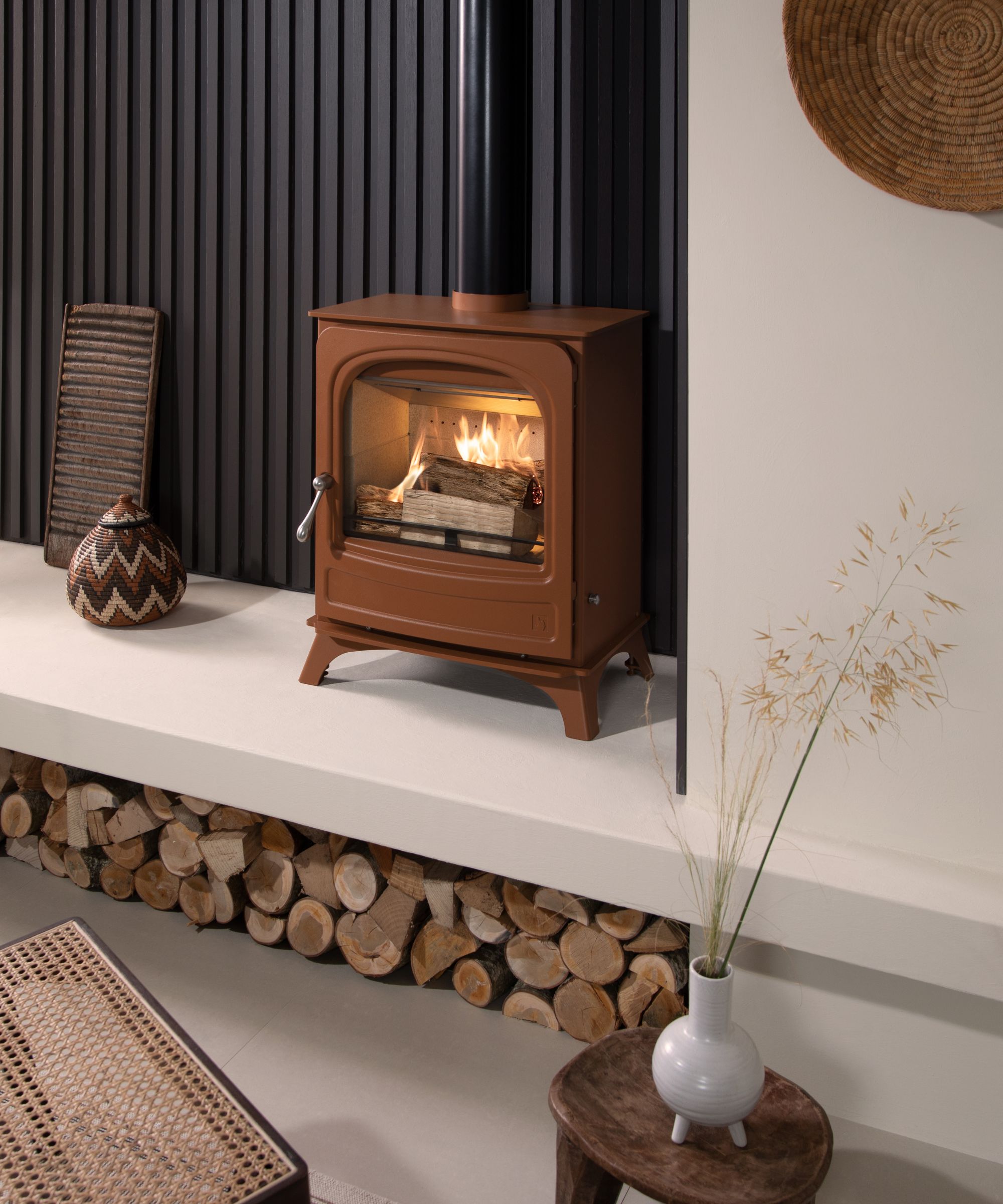
By building log storage into the hearth itself – whether through recessed cubbies or a raised stone platform – you create a feature that feels intentional while keeping fuel close to hand.
“Functional and stylish, integrated log storage around the hearth adds practicality while creating a cosy, contemporary look,” explains Phil Wood. “Use granite or stone hearths with built-in cubbies for logs to showcase the wood itself, serving to anchor the fireplace in the room whilst also adding warmth and texture.”
For day-to-day use, Phil Wood also advises a little care when handling fuel: “When moving logs, use a log basket rather than stacking directly on the hearth. This will prevent scratches on softer materials like slate.”
Keeping log storage ideas neat and considered not only protects your surfaces but also ensures the hearth remains a focal point rather than a cluttered corner.
5. Choose exposed brickwork
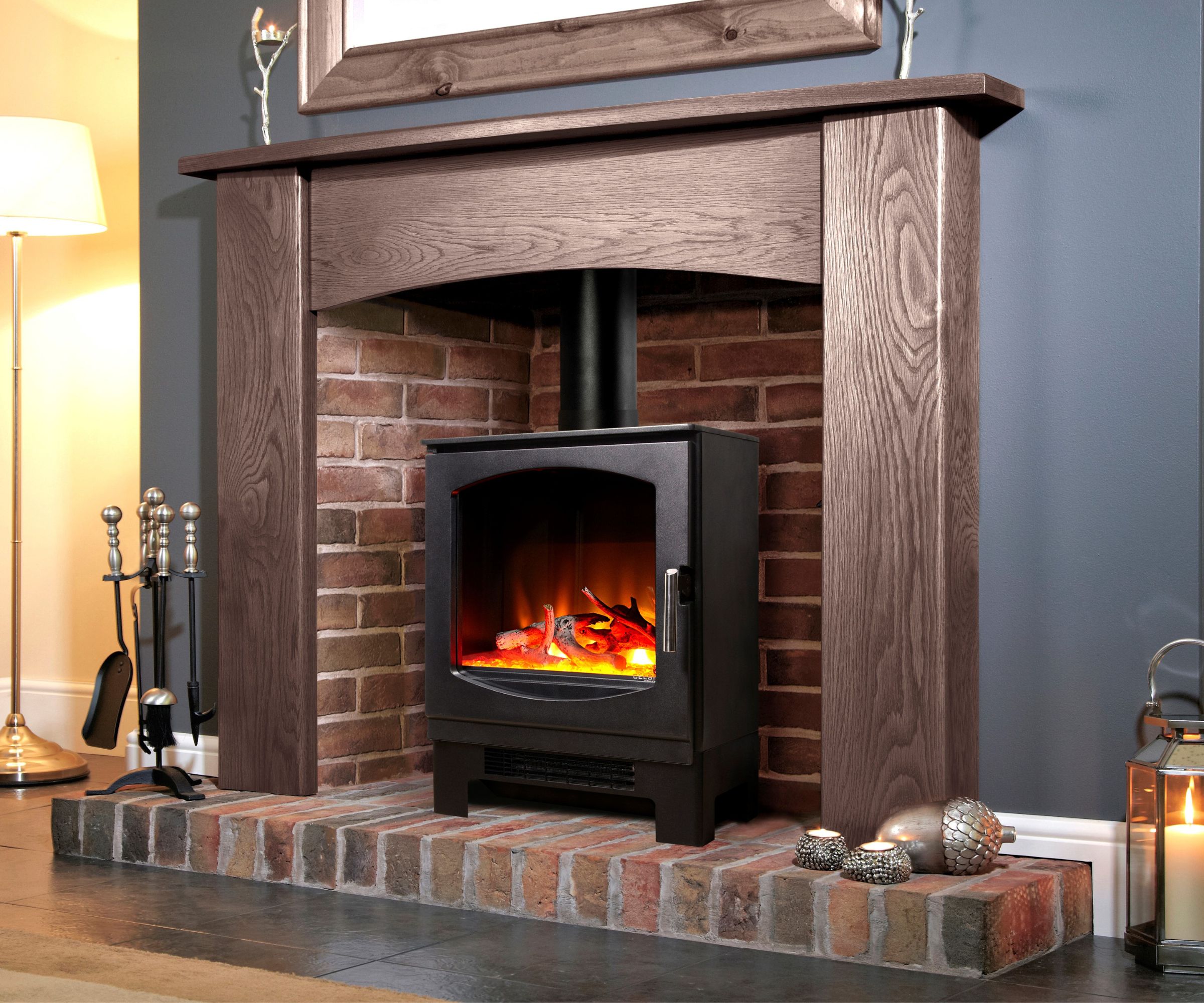
For a hearth with instant warmth and authenticity, brick is hard to beat. Its natural texture and earthy tones give a log burner a classic, grounded look, whether you’re working with an original fireplace or creating a new surround. The effect feels especially at home in period properties, where brick complements traditional detailing and adds a rustic edge.
Phil Wood highlights why it’s a reliable option: “Brick is a traditional choice, known for its heat resistance. It can withstand high temperatures without cracking or degrading. It retains a cool outer surface even under intense heat, preventing damage to your stove.”
As this design by Direct Stoves shows, exposed brickwork also pairs beautifully with timber mantels, sleek black stoves and soft lighting.
6. Introduce patterned or mosaic tiles
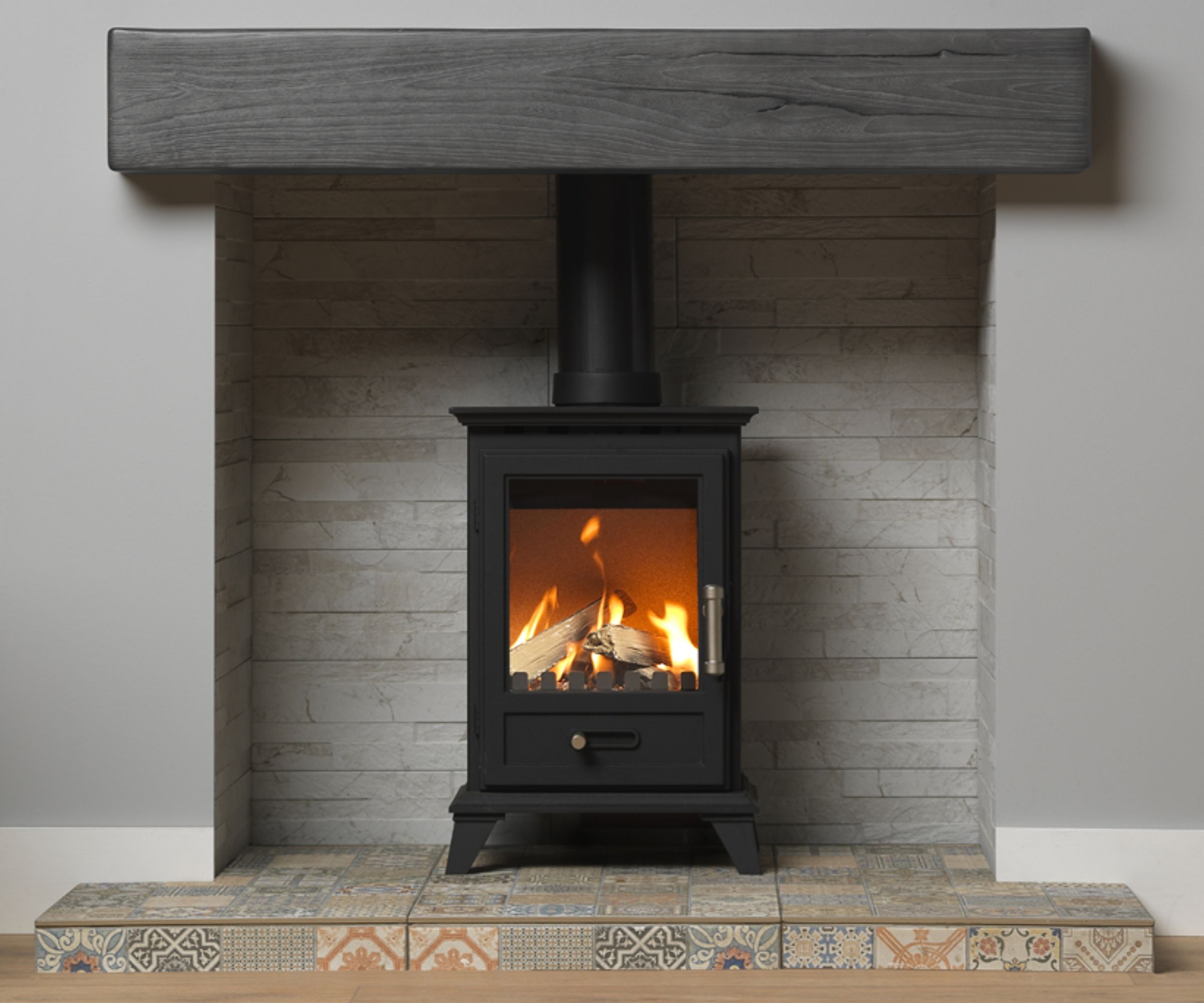
Whether you choose a subtle mosaic in soft neutrals or a vibrant patchwork of colour, patterned tiles can transform the base of your stove into a highly decorative feature. The example here from StovesAreUs shows how a mix of intricate designs in earthy shades adds character and depth to an otherwise pared-back scheme.
“For those looking to inject some personality into their fireplace, patterned tiles are a unique way of transforming the hearth into a statement feature," explains Phil Wood, "Instead of plain stone, opting for artisan cement, decorative clay or small mosaic patterns adds colour and vibrant visual textures. With geometric, playful or floral designs, the hearth transforms from a functional object into an eye-catching feature that reflects the personality of the homeowner.”
Get the look
7. Contrast the surround and hearth
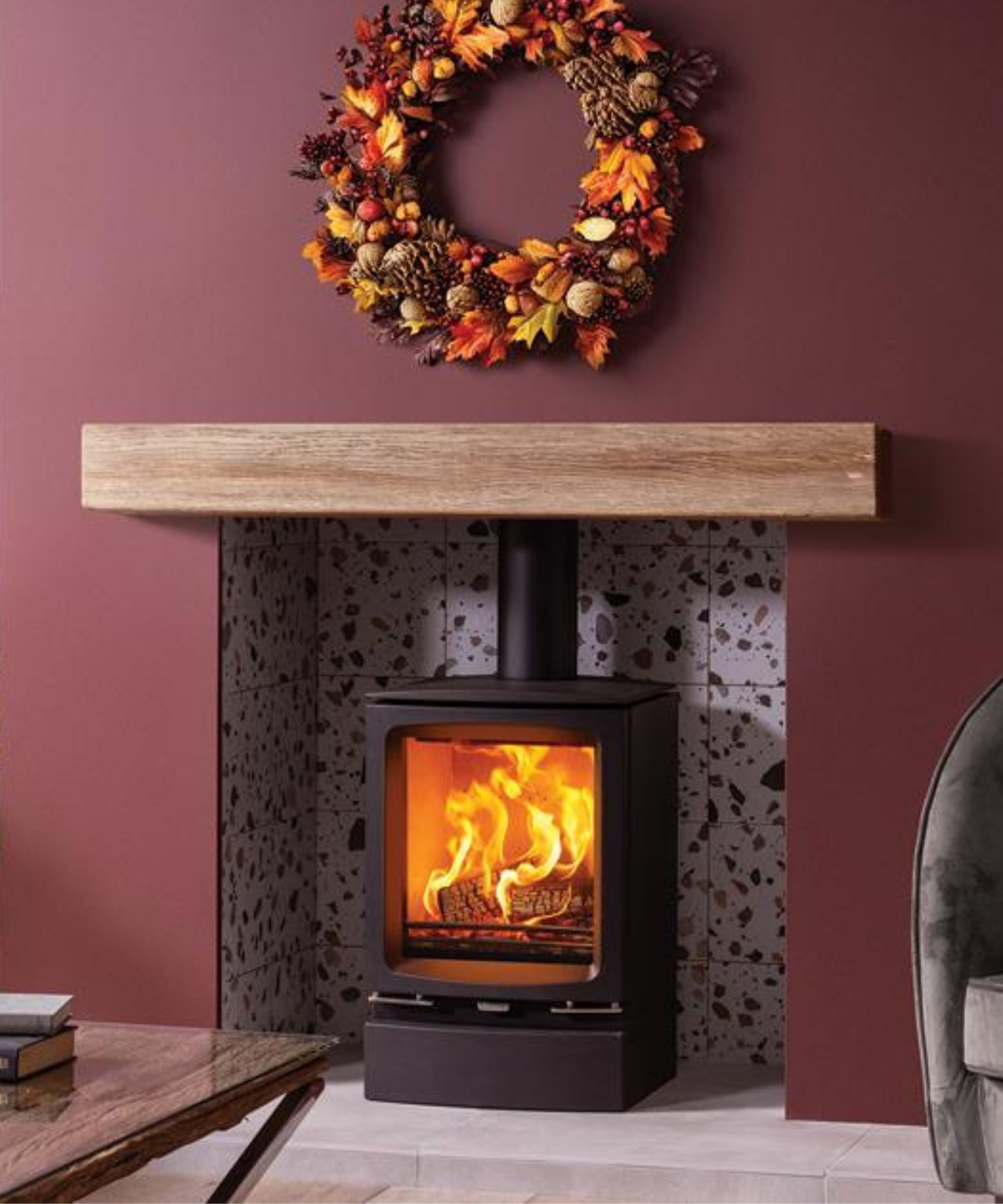
Adam Oldfield from StovesAreUs suggests using contrast to frame your fireplace ideas.
“Try using contrasting colours and materials to frame the hearth,” he says. “For example, pair a black granite hearth with brass or copper fenders, or contrast creamy marble with an ornate black surround.”
Playing with contrast is a simple but effective way to make your stove area feel considered. As shown in the design above, terrazzo is another strong option. Its speckled finish adds a playful, mid-century note to this oak beam fireplace while still being durable and heat-safe.
8. Embrace a flush design
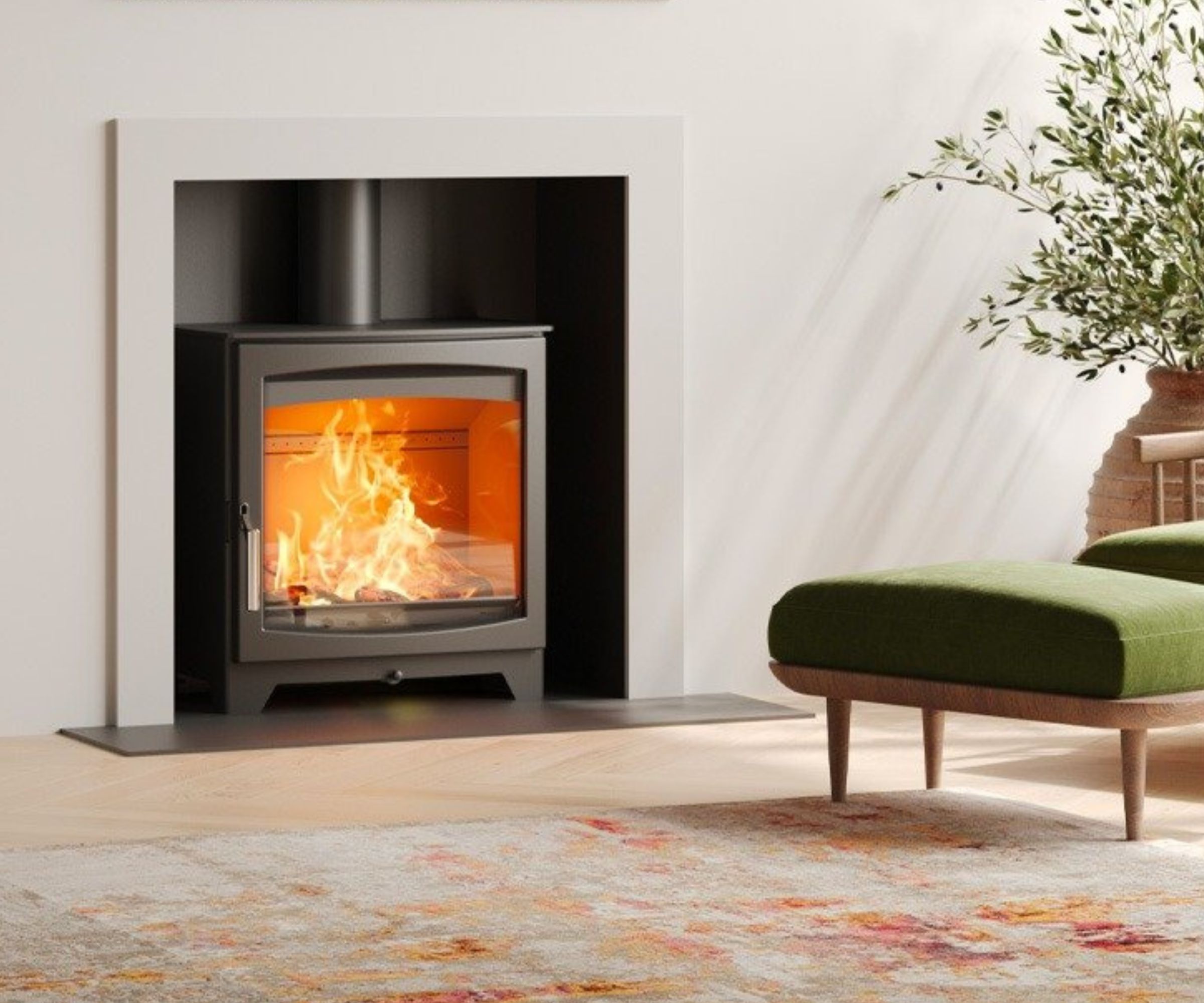
A flush hearth creates a seamless line between the stove and the floor, and in glass the effect is even sharper as it protects while remaining almost invisible in the room. It’s a clever option for modern living rooms where you want the flames to be the main focus rather than the base beneath them.
“For a modern flush design, few materials achieve the look as well as glass. These are a stylish and contemporary choice that provides a safe surround for solid fuel stoves,” says Joanna Humphreys. She adds that unlike darker stone, glass doesn’t visually cut into the floor: “The benefit of glass is that, if you have a stone hearth, it’s almost guaranteed to be dark in colour, meaning you may ‘lose’ part of your floor. Glass hearths are also easy to clean.”
She also highlights steel as an alternative: “Like glass hearths, steel provides a modern choice to sit underneath your stove that can be shaped much easier than stone. Easy to clean, steel hearths are an ideal match for contemporary wood burning stoves, almost acting as an extension to the styling.”
9. Use reflective or polished finishes
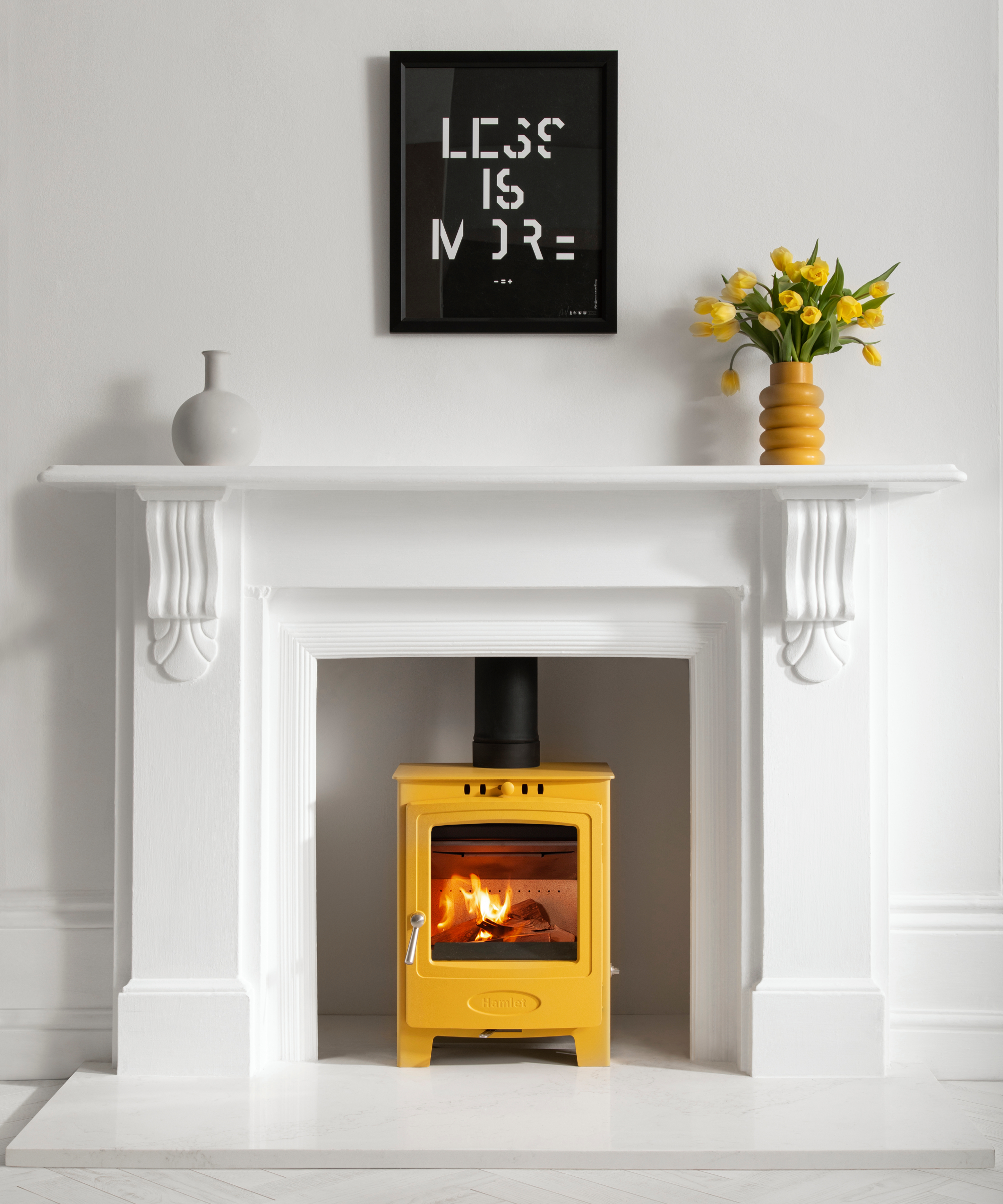
A log burner is all about atmosphere, and the right finish beneath it can amplify that warmth tenfold. Polished stone or high-shine marble not only protects your floor, but it plays with the light, bouncing the flicker of the flames back into the room. The effect is luminous, almost theatrical, and can make even the smallest corner feel more expansive.
Phil Wood explains how these surfaces can shape the mood of a space: “Using materials or finishes that contrast with the surrounding walls or floor can make your hearth feel more intentional. For example, a dark slate hearth will stand out against a pale timber floor, while a lighter stone or marble hearth can brighten a darker room. Contrast can also be introduced through textures. Pairing a matte hearth with a glass stove door for example, will make a powerful statement and draw attention to the flames.”
10. Keep it tonal
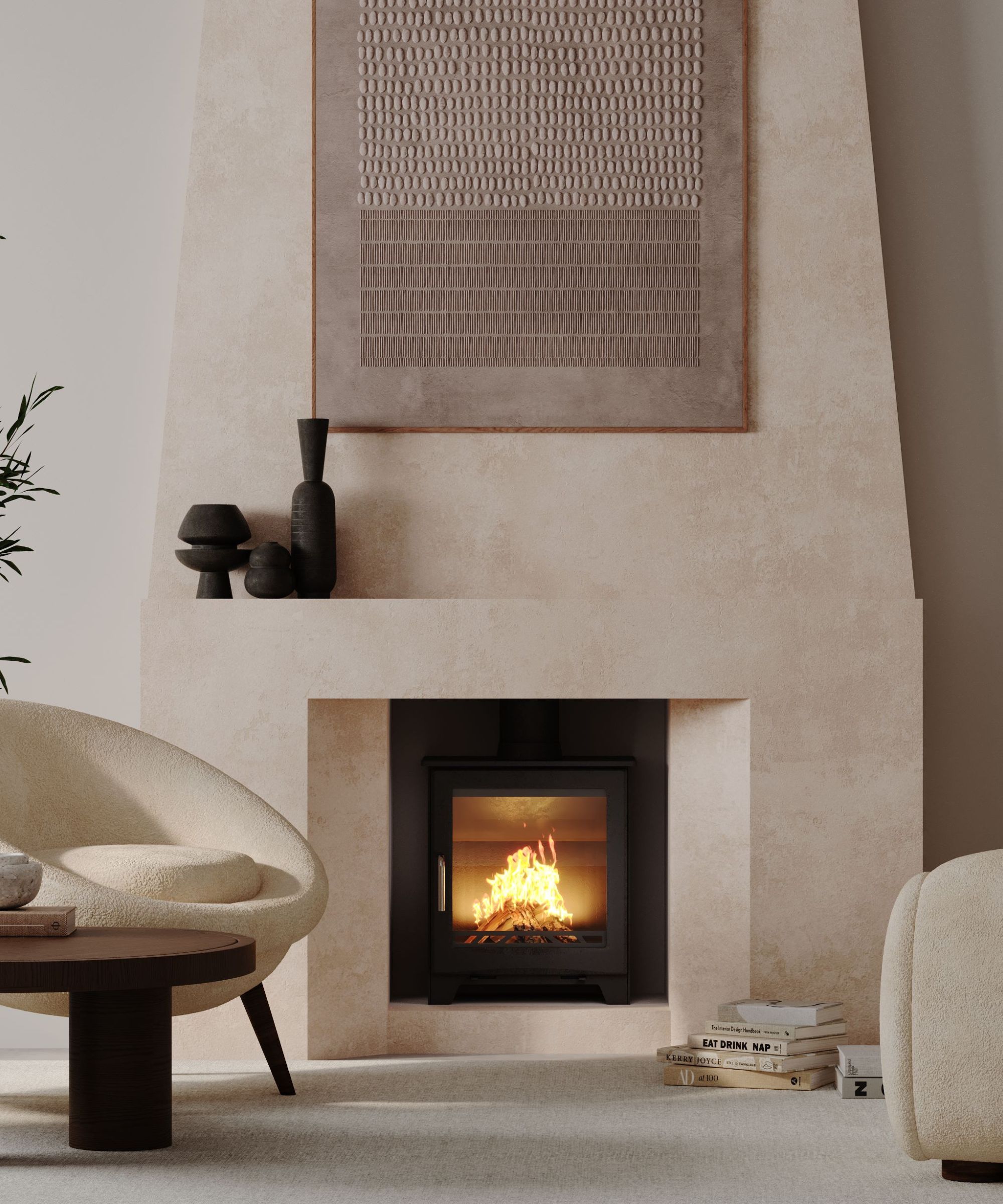
Sometimes the most effective hearth design is the quietest. Choosing materials in the same palette as your walls or floors creates a tonal look where the stove appears built into the architecture. It’s a sophisticated approach that works beautifully in contemporary spaces, giving the fire a calm backdrop that lets the flames do the talking.
The effect is shown here in warm stone hues, where the hearth, surround and walls melt into one another. By limiting contrasts, the overall look feels soft, cohesive and carefully considered, which is ideal if you want your log burner to complement rather than dominate the room.
Practical tip: Tonal designs work best when you choose durable finishes that won’t stain or mark easily, as paler surfaces can be less forgiving around an active stove.
FAQs
How much clearance should you leave around a log burner?
Clearances are essential for both safety and compliance with building regulations. Jon Butterworth, director at Arada Stoves, advises:
“When fitting a stove, you must allow enough clearance from combustible materials like wood or plasterboard to meet safety rules and prevent fire risks. The exact distances depend on the stove model, so always check with your installer, but as a guide:
- Above the stove: 150mm (500mm if there’s a wooden mantel)
- Sides: 150mm each side
- Front: 255mm
- Hearth: at least 840x840mm and 12mm thick
- Behind the stove: varies by model – ask your fitter.
What if my stove is fitted into a fireplace recess?
“For a stove in a fireplace recess, the above rules apply however there needs to be a ‘constructional hearth’ which projects at least 500mm forward of the front of the stove and 150mm at each side. This floor of the fireplace needs to be at least 250mm thick to meet building regulations.”

Jon Butterworth is Managing Director of Arada Stoves, one of the UK's leading suppliers of log burning stoves and has a wealth of experience in supplying and installing them.
How do you maintain a log burner hearth?
Like the stove itself, the hearth will benefit from regular upkeep to keep it safe and looking its best. Phil Wood, UK Managing Director of Contura, advises the following practical tips:
“Regular cleaning is very important – sweep or vacuum the hearth to remove ash, dust or splinters of wood. For stone or tile, a damp cloth and light soap solution work best, while harsh chemicals should be avoided as they may stain or damage the surface. Keeping the hearth free of clutter helps it remain a strong feature in a room and is also key to using your wood-burning stove safely.”
If you’re installing a log burner, it’s worth thinking about the finishing touches. Exploring log burner surround ideas can help you create a feature that feels intentional, while the best stove fan will help you get the most out of your model by distributing heat more quickly. And don’t forget, knowing how to clean log burner glass will keep your view of the flames crystal clear.

Gabriella is an interiors journalist and has a wealth of experience creating interiors and renovation content. She was Homebuilding & Renovating's former Assistant Editor as well as the former Head of Solved at sister brand Homes & Gardens, where she wrote and edited content addressing key renovation, DIY and interior questions.
She’s spent the past decade crafting copy for interiors publications, award-winning architects, and leading UK homeware brands. She also served as the Content Manager for the ethical homeware brand Nkuku.
Gabriella is a DIY enthusiast and a lover of all things interior design. She has a particular passion for historic buildings and listed properties, and she is currently in the process of renovating a Grade II-listed Victorian coach house in the West Country.
